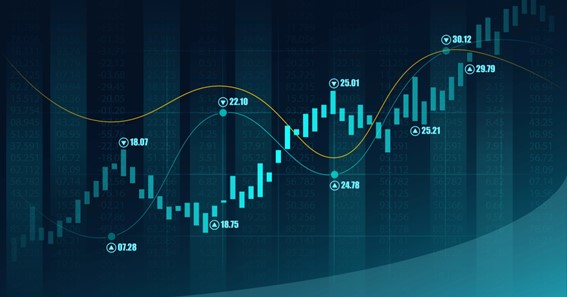As an investor, trading Contracts for Difference (CFDs) on Forex markets can be a profitable way to participate in the global economy. And investors can use CFDs to speculate on the price movements of financial instruments like Forex pairs without actually owning the underlying asset. So, this article will discuss Forex CFD trading using trends and patterns.
What Are CFDs?
A CFD is a financial contract between a buyer and a seller in which the buyer pays the seller the difference between the current price of an asset and the price at which the contract is settled. Because they let investors speculate on currency pair price movements without holding the underlying assets, CFDs are widely used in the forex market. CFDs also allow investors to leverage their trades, amplifying gains and losses.
Understanding Forex Markets
The world’s largest and most liquid financial market is the forex market. In this decentralised market, currency pairings are exchanged five days a week, around-the-clock. Supply and demand factors, such as interest rates, economic data, political events, and market sentiment, determine the value of a currency pair.
Using Trends and Patterns in Forex Trading
A popular approach utilised by Forex traders is to engage in trading based on trends and patterns. A trend is a direction in which the price of an asset is moving. So, traders look for trends to identify potential trading opportunities. Meanwhile, a pattern is a predictable formation of price movements that can signal traders to enter or exit trades.
Identifying Trends in Forex Trading
There are three different sorts of trends in forex trading: uptrends, downtrends, and sideways trends. When an asset’s price increases, it is known as an uptrend and is denoted by a string of higher highs and higher lows. In contrast, a downtrend occurs when an asset’s price is declining, as shown by a string of lower highs and lower lows. An asset is said to be in a sideways trend when its price oscillates within a range.
Traders employ technical analysis tools, including moving averages, trendlines, and momentum indicators, to spot trends. Using moving averages is one technique to pinpoint the trend’s axis and even out price changes. Trendlines are used to connect two or more price points and identify the slope of the trend. Momentum indicators are utilised for gauging the potency of a trend.
Trading With Chart Patterns
Chart patterns are another important tool used by Forex traders to identify potential trading opportunities. They are formations of price movements that can indicate a reversal or continuation of the trend. As such, they can be classified into two types: continuation patterns and reversal patterns.
Continuation patterns are formed during the price consolidation phase, indicating that the price will likely continue in the same direction as the trend. Common continuation patterns include triangles, flags, and pennants.
Reversal patterns are formed when the price changes direction, indicating that the trend is about to reverse. Common reversal patterns include head and shoulders, double tops, and double bottoms.
Managing Risk in Forex Trading
Trading forex requires effective risk management. Traders should always have a risk management strategy to protect their capital. And one of the most effective risk management strategies is to use stop-loss orders. A stop-loss order is an instruction to end a trade at a specific price level that has been predetermined. This helps traders limit their losses in case the market moves against them.
Another important risk management strategy is to use proper position sizing. To prevent significant losses, traders should only risk a small portion of their funds on each deal. Additionally, traders should maintain discipline and avoid making irrational decisions by having a clear trading plan and sticking to it.
Forex CFD trading with trends and patterns can be profitable for investors. By understanding the basics of CFD trading and the factors that drive Forex markets, traders can use technical analysis tools to identify trends and patterns and make informed trading decisions. However, it is important to always manage risk properly and have a solid trading plan to achieve long-term success.
